During my academic research on corporate sustainability efforts, I have realized that all stakeholders, from regulators1 to investors,2 want to see real efforts from businesses to mitigate the negative impacts of climate change. For organizations to minimize their carbon footprint, the first stage is to measure their carbon footprint properly.
Explore the corporate carbon footprint and learn a step-by-step method of carbon footprint calculation:
What is the Corporate Carbon Footprint?
The carbon footprint is the measurement of a company’s greenhouse gas (GHG) emissions in units of tons.3 A larger carbon footprint signifies a greater negative impact on global warming and climate change.
Companies release GHG such as carbon dioxide, methane, hydrofluorocarbons into the atmosphere during manufacturing, transportation, or other business activities. Carbon footprint of a company accounts for both the direct and indirect GHG emissions of the company.
Direct vs. indirect emissions
Direct GHG emissions
These are emissions that occur from sources owned or controlled by the company. For example, a fossil fuel power plant burning coal or a factory releasing carbon dioxide as a by-product during cement production contributes to direct greenhouse gas emissions. These emissions are produced directly from activities like heat generation or fuel consumption within the company’s operations.
Indirect GHG emissions
These emissions are a result of activities from sources not owned or directly controlled by the company but are related to the company’s operations. This includes emissions from electricity consumption, transportation, and the production of purchased goods.
For example, natural gas used in electricity generation or the emissions associated with raw materials and transportation emissions fall under this category. These emissions are often more challenging to track but can be significant, especially in sectors with extensive supply chains.
Figure 1. Direct, indirect and total GHG emissions created by homes and businesses in the U.S.
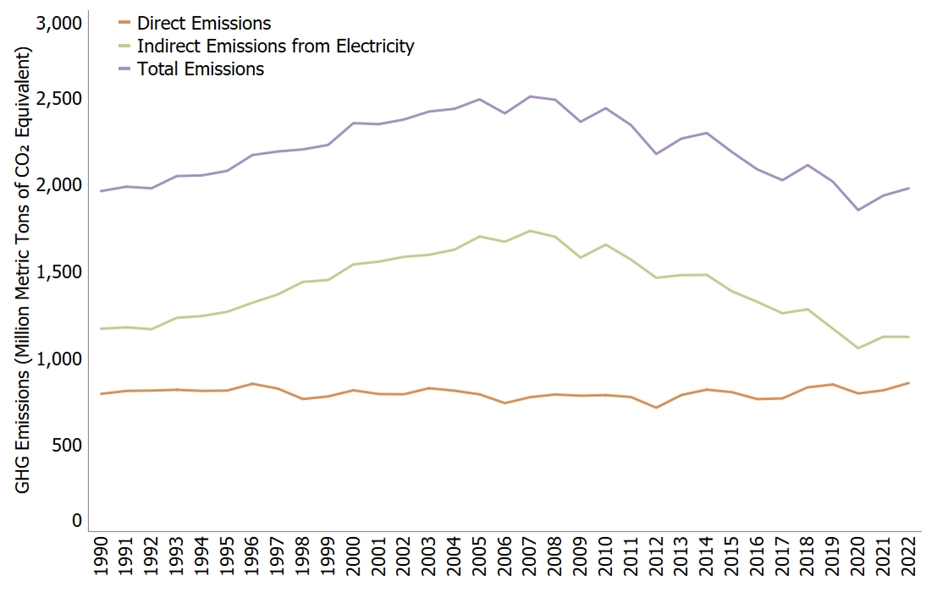
Source: U.S. Environmental Protection Agency4
GHG emissions classifications
The Greenhouse Gas Protocol provides a three-tier classification for GHG emissions, helping companies categorize their emissions accurately:
Scope 1
Direct GHG emissions from owned or controlled sources. This includes emissions from company-owned vehicles, factories, and equipment.
Scope 2
Indirect GHG emissions from the generation of purchased energy consumed by the company. This includes electricity, steam, and heat.
Scope 3
All other indirect emissions that occur in the company’s value chain, including upstream and downstream activities. This encompasses emissions from the production of purchased goods, business travel, waste disposal, and transportation emissions.
Figure 2. Supply chain scope 1, 2 and 3
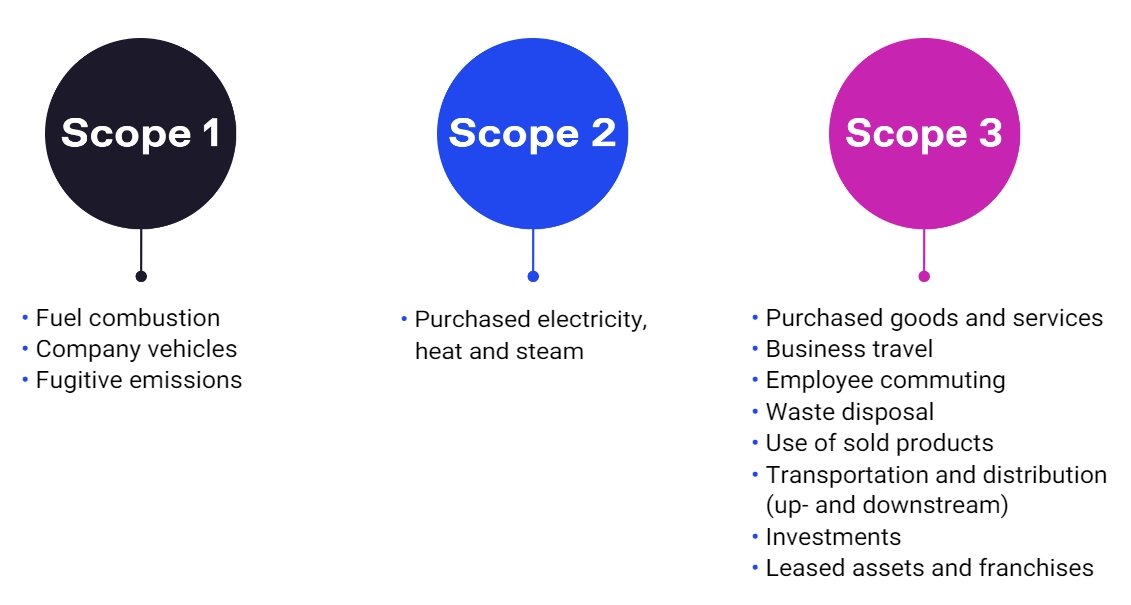
Source: Carbon Trust5
Importance of carbon footprint calculation
Accurate carbon footprint calculation is crucial for several reasons:
1. Compliance and reporting
Companies are also tasked with complying with local environmental regulations and focusing on reducing air pollution, including greenhouse gas emissions, and energy consumption. By incorporating environmental science and sustainable practices into their sustainability management plans, businesses contribute to environmental protection and address the challenges of climate change and resource conservation.
Carbon footprint calculation helps companies meet major climate disclosure regulations and demonstrate their commitment to sustainability. This is increasingly important for maintaining strong customer and investor relations.
Real-life example: Renault decreases the cost of non-compliance by 50% thanks to blockchain technology, which enables them to collect transparent data from customers to calculate carbon footprint metrics such as recycling rate.6
2. Emissions management
Provides a basis for setting emission reduction targets and tracking progress. By identifying key areas of high carbon emissions, companies can focus their sustainability efforts on the most impactful activities.
Real-life example: Swire Properties was able to cut greenhouse gas emissions intensity throughout their portfolio by nearly 20% because of low carbon integrated materials and the calculation of carbon footprint via digital technologies.7
3. Business benefits
Effective carbon management can lead to cost savings through improved energy efficiency, reduction in fuel consumption, and enhanced corporate reputation. It also supports business growth by aligning with global sustainability trends and consumer expectations.
In addition, all stakeholders, from regulators8 to investors,9 want to see real efforts from businesses to mitigate the negative impacts of climate change.
Consumers and investors consider companies’ ESG practices when deciding whether to buy their products or invest in them.10
How to calculate carbon footprint?
Carbon footprint is measured by multiplying the unit of business operation (e.g., gallons of gasoline) with the operation-specific emission factor (which is equal to 8,887 times 0,001 metric tons CO2/gallon for gasoline according to the US Environmental Protection Agency.11
So, for instance, a field sales team that consumes 13503 gallons of gasoline per month for transportation purposes creates a carbon footprint of approximately 120 tons per month.
Figure 3. Calculation of carbon footprint
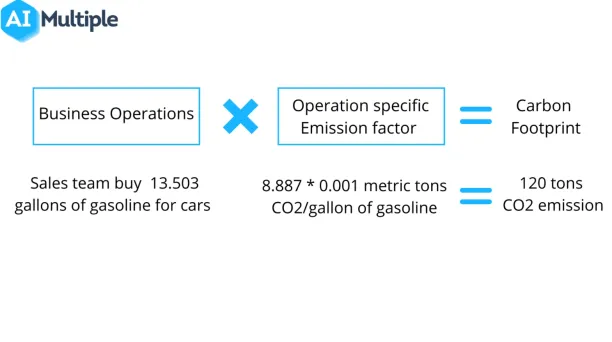
To calculate corporate carbon footprint or product carbon footprint, Businesses have to know numerous, specific emission factors, such as:
- Kilowatt-hour emission factor for power use. This varies from one place to another and from one time to another because the weight of green energy generation within the total energy supply changes accordingly.
- Emission factor for a metric cup of natural gas consumption.
- Emission factors of a kilogram of raw materials you use for production, etc.
To effectively apply this formula, we divide the task of calculating carbon footprint into four main parts, namely, identifying business operations, collecting data on each business operation, determining operation-specific emission factors, and performing the final calculation and interpretation.
1. Identify business operations that produce GHG
To effectively measure and reduce your company’s carbon emissions, it’s essential to break down the calculation process into clear steps. Understanding how much greenhouse gases (GHG) your business generates is the first step toward sustainable operations.
By following the four main parts of the carbon footprint calculation process—identifying business operations, collecting data, determining emission factors, and performing the final calculation—you’ll be able to estimate your company’s impact and take action to mitigate it.
The first step in calculating your company’s total carbon footprint is identifying the activities that emit GHG into the atmosphere. For most organizations, this includes:
- Energy consumption: Heating, cooling, and lighting that consume electricity or fossil fuels contribute directly to greenhouse gas emissions.
- Transportation: Business travel, product delivery, or employee commuting—often measured in fuel usage such as liters or gallons.
- Waste management: Disposal of waste materials, including recycling and other waste handling processes.
- Supply chain activities: Emissions generated by suppliers and partners across the product life cycle.
Each of these activities requires choosing a specific metric to determine the scope of their impact. For example, electricity consumption is measured in kilowatt hours, and fuel economy is measured in gallons of gasoline. These metrics are crucial for obtaining an accurate estimate of how much energy your business operations require and how much carbon they produce.
2. Collect data
Collecting the right data is an essential step in obtaining an accurate estimate of your company’s carbon footprint. Gathering this information can be challenging, as companies often generate carbon emissions from both direct and indirect sources.
- Direct emissions come from operations like heating, where natural gas is burned on-site.
- Indirect emissions, however, might come from purchased electricity or upstream activities in the supply chain.
In some sectors, Scope 3 emissions—those related to supply chain or product usage—can account for the majority of total emissions.
The use of utility bills, transportation logs, and production records will help you measure your company’s emissions. It’s also advisable to use software tools or consult specialized firms to track and manage data.
Cloud-based ERP technologies are particularly effective, as they compile real-time financial and operational data, giving a more comprehensive look at emissions data. Whether it’s tracking heating costs, electricity consumption, or the fuel used in company cars, these tools will streamline your data collection and help provide accurate data for further analysis.
3. Find operation-specific emission factors
Once you’ve gathered data on your company’s operations, you need to determine how much GHG each of these activities generates. This is where emission factors come into play. Emission factors provide a standardized way to measure the amount of greenhouse gas emissions per unit of activity, such as per kilowatt-hour of electricity used or per gallon of gasoline consumed.
Reliable sources such as the Environmental Protection Agency (EPA) or the Higg Index can offer these factors, helping you to accurately estimate your company’s footprint. For example, the EPA provides U.S.-wide data on carbon emissions per kilowatt-hour of electricity, but the actual emissions can vary based on regional power sources.
Some areas rely heavily on coal-fired power plants, while others use renewable energy like wind or solar, leading to lower emissions.
Using region-specific data where possible will improve the accuracy of your calculation. Consulting firms or advanced software platforms can also help with this step, offering specialized insights and automated calculations.
4. Calculate and interpret
With all your data and emission factors collected, the next step is to calculate the total carbon footprint of your organization. This involves multiplying the activity data by the emission factors for each business operation. For example, multiplying the number of gallons of gasoline used in company vehicles by the emission factor for gasoline combustion will give you the carbon emissions from transportation.
The final step is to interpret your results. Use this analysis to identify which areas of your business contribute the most to GHG emissions and explore opportunities for emissions reduction. For instance, you may find that switching to renewable energy sources or improving your fleet’s fuel economy will significantly cut emissions.
Cloud-based carbon calculators or next-generation software platforms can be especially useful in this phase, as they break down emissions into Scope 1, Scope 2, and Scope 3 categories, helping you pinpoint areas for improvement. In addition, advanced analytical capabilities of such tools can help you find pain points of your operations.
Figure 4. An example of a carbon footprint calculator’s data visualization
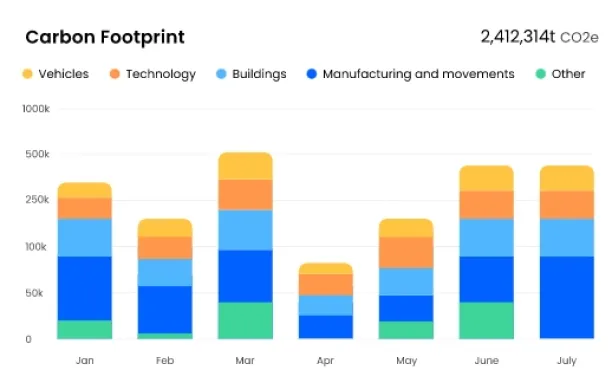
Source: Net012
You can also explore carbon offsets or investments in energy efficiency and recycling programs to make a big difference in the long run. Setting clear goals for reducing emissions and reporting progress will help your organization demonstrate its commitment to sustainability and a healthier planet.
To lower your carbon footprint while increasing operational efficiency, read digital transformation.
To improve your corporate sustainability, read ESG best practices and circular economy best practices.
This article was drafted by former AIMultiple industry analyst Görkem Gençer and is dedicated to his grandmother, Çağlayan Gençer, who was always concerned about her environmental impact. Her last words to Görkem Gençer was: “While going to the ambulance, I left the lights on. I hope you turned off the lights after me.” AIMultiple hopes that soon everyone will be aware of our impact on the environment, be concerned about it, and work to lessen it.
External Links
- 1. Corporate sustainability reporting - European Commission.
- 2. Shareholders Are Getting Serious About Sustainability. Harvard Business Review
- 3. Carbon Footprint Factsheet | Center for Sustainable Systems.
- 4. Greenhouse Gas Equivalencies Calculator - Calculations and References | US EPA.
- 5. What are Scope 3 emissions and why do they matter? | The Carbon Trust.
- 6. A new blockchain solution for the certification of vehicle compliance at European level will be implemented. Renault Group
- 7. Unlocking a sustainable future: Why digital solutions are the key to sustainable business transformation. Schneider Electric. Accessed: 4/September/2024.
- 8. Corporate sustainability reporting - European Commission.
- 9. Shareholders Are Getting Serious About Sustainability. Harvard Business Review
- 10. Park, S. R., & Jang, J. Y. (2021). The impact of ESG management on investment decision: Institutional investors’ perceptions of country-specific ESG criteria. International Journal of Financial Studies, 9(3), 48.
- 11. Greenhouse Gas Equivalencies Calculator - Calculations and References | US EPA.
- 12. Net0 | Enterprise AI Platform for Corporate Sustainability.
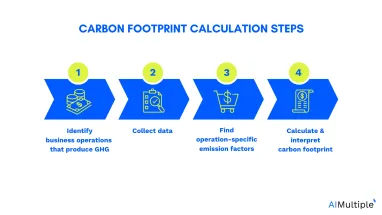
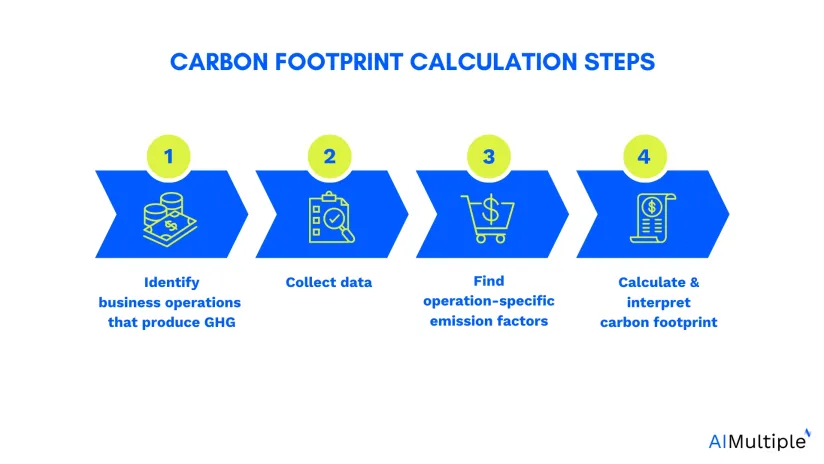


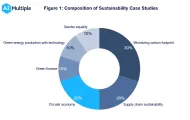
Comments
Your email address will not be published. All fields are required.